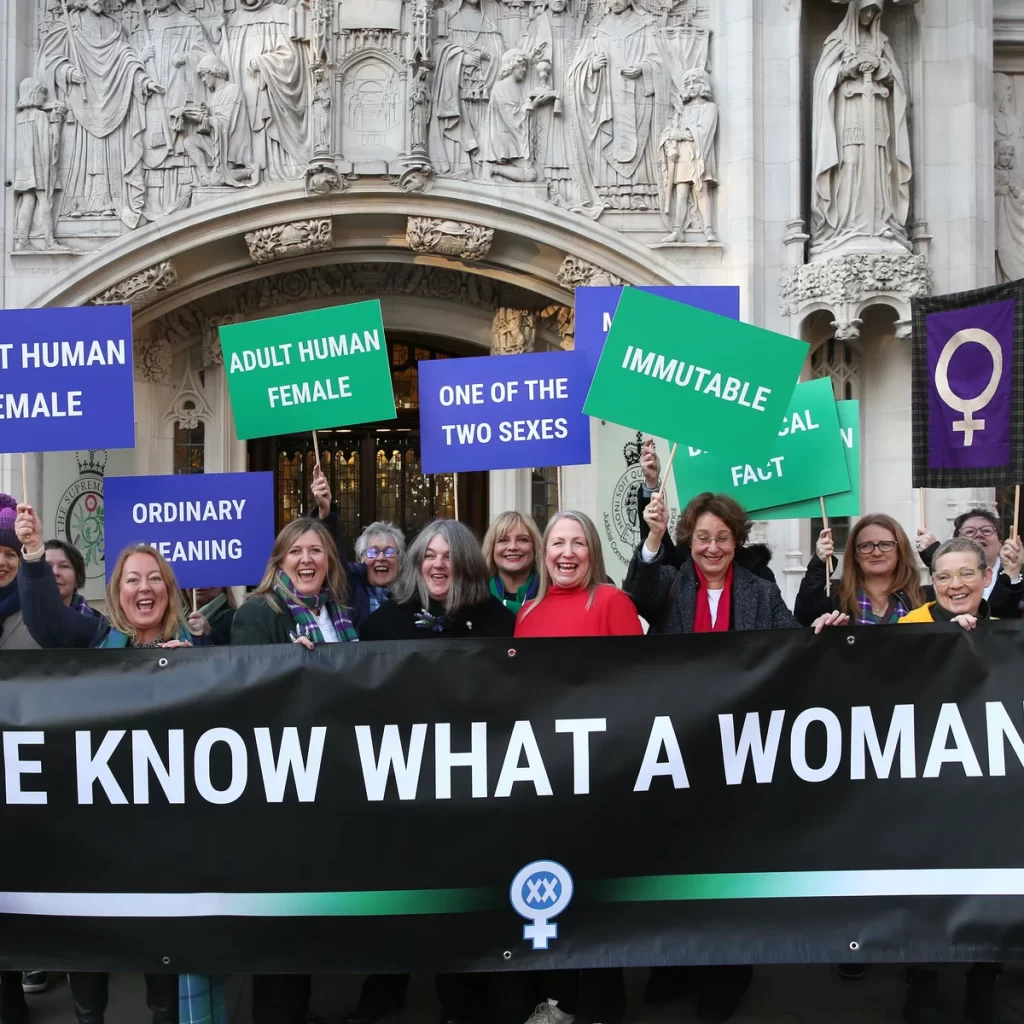
London | April 10, 2025 — In a historic and closely watched decision, the UK Supreme Court has issued a landmark ruling clarifying the legal definition of the term “woman” under British law, marking a turning point in the national debate over gender identity, equality, and legal rights.
The ruling, handed down on Thursday, came in response to a high-profile case brought by an advocacy group challenging the way “woman” is interpreted in legislation relating to single-sex spaces, employment, and public services.
At the heart of the case was whether the legal definition of a woman should be based strictly on biological sex or whether it should include transgender women who have legally transitioned under the Gender Recognition Act 2004. The appellants argued that including individuals who are not biologically female under the legal category of “woman” undermines the purpose of sex-based protections in areas such as women’s shelters, sports, and political representation.
In a 5-2 decision, the Supreme Court ruled that while transgender women who have obtained a Gender Recognition Certificate are legally recognized as women in many contexts, the original legislative intent of sex-specific protections—particularly in the Equality Act 2010—can still be interpreted in a biologically-based manner when necessary to achieve legitimate aims.
Key Points of the Ruling:
- Legal Recognition vs. Biological Sex: The Court reaffirmed that under the Gender Recognition Act, a person with a Gender Recognition Certificate is legally recognized in their acquired gender. However, it also clarified that this legal recognition does not override provisions where biological sex is a relevant and proportionate consideration.
- Single-Sex Spaces: The ruling gives organizations legal backing to operate female-only spaces or services based on biological sex when justified by safety, privacy, or fairness, provided such exclusion is proportionate and non-discriminatory.
- Implications for Policy and Lawmakers: The judgment urges lawmakers and public bodies to provide clearer guidelines on how sex and gender identity should be considered in law and policy, to prevent further legal uncertainty.
Reactions:
The decision has sparked reactions across the political and social spectrum. Women’s rights groups welcomed the ruling, saying it protects vital sex-based protections while respecting transgender rights under existing law.
“This is not about exclusion—it’s about clarity,” said Julie Barker, spokesperson for the Women’s Policy Network. “We now have legal affirmation that there are contexts where biological sex matters, and that recognizing this does not inherently violate the rights of transgender people.”
Transgender advocacy organizations, however, expressed concern that the ruling could open the door to discrimination and misunderstanding.
“We fear this decision may lead to the misuse of ‘biological sex’ to justify the exclusion of trans women from public life,” said Emma Grant of TransEquality UK. “The law must protect all marginalized communities, not divide them.”
Next Steps:
The ruling is expected to influence how public institutions, employers, and service providers interpret and implement gender-related policies moving forward. Legal experts also anticipate further legislative reviews or potential reforms to harmonize the Gender Recognition Act with the Equality Act and evolving social realities.
While the Supreme Court ruling may not end the debate over sex and gender in the UK, it has set a precedent that will shape how these complex issues are addressed in law and society for years to come.




